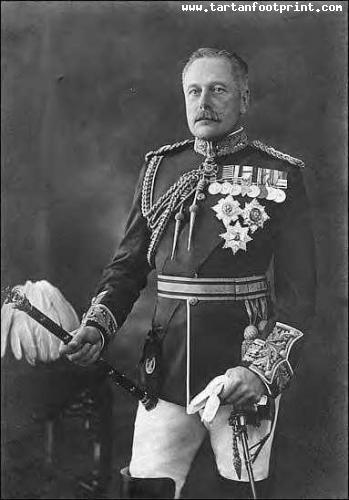You seem to be using an older version of Internet Explorer. This site requires Internet Explorer 8 or higher. Update your browser here today to fully enjoy all the marvels of this site.
October 3, 2018 by Alexander Meldrum
Douglas Haig, 1st Earl Haig KT, GCB, OM, GCVO, KCIE.
Field Marshal Douglas Haig, 1st Earl Haig, KT, GCB, OM, GCVO, KCIE (/heɪɡ/; 19 June 1861 – 29 January 1928) was a senior officer of the British ...Douglas Haig, 1st Earl Haig KT, GCB, OM, GCVO, KCIE.
Field Marshal Douglas Haig, 1st Earl Haig, KT, GCB, OM, GCVO, KCIE (/heɪɡ/; 19 June 1861 – 29 January 1928) was a senior officer of the British Army.
During the First World War he commanded the British Expeditionary Force (BEF) on the Western Front from late 1915 until the end of the war.
He was commander during the Battle of the Somme, the Third Battle of Ypres, the German Spring Offensive, and the Hundred Days Offensive.
Although he had gained a favourable reputation during the immediate post-war years, with his funeral becoming a day of national mourning, Haig has since the 1960s become an object of criticism for his leadership during the First World War.
He was nicknamed "Butcher Haig" for the two million British casualties endured under his command. The Canadian War Museum comments, "His epic but costly offensives at the Somme (1916) and Passchendaele (1917) have become nearly synonymous with the carnage and futility of First World War battles.
Major-General Sir John Davidson, one of Haig's biographers, praised Haig's leadership, and since the 1980s many historians have argued that the public hatred in which Haig's name had come to be held failed to recognise the adoption of new tactics and technologies by forces under his command,
the important role played by British forces in the allied victory of 1918, and that high casualties were a consequence of the tactical and strategic realities of the tim
Early Life
Haig was born in a house on Charlotte Square, Edinburgh, but technically it was addressed as 19 Hope Street, the side street to the south-west (a plaque exists).
He was not an aristocrat by birth, or landed gentry. His father John Richard Haig—an irascible alcoholic—was middle class ("in trade"), and as head of the family's successful Haig & Haig whisky distillery had an income of £10,000 per year (£1,160,000 in 2018), an enormous amount at the time.
His mother, Rachel (daughter of Hugh Veitch of Stewartfield),[16] was from a gentry family fallen on straitened circumstances. Rachel's cousin, Violet Veitch, was mother of the playwright, composer and performer Noël Coward.
Haig's education began in 1869 as a boarder at Mr Bateson's School in Clifton Bank, St Andrews. Later in 1869, he switched to Edinburgh Collegiate School, and then in 1871 to Orwell House, a preparatory school in Warwickshire.
He then attended Clifton College. Both of Haig's parents died by the time he was eighteen.
After a tour of the United States with his brother, Haig attended university, studying Political Economy, Ancient History and French Literature at Brasenose College, Oxford, 1880–1883.
He devoted much of his time to socialising – he was a member of the Bullingdon Club – and equestrian sports. He was one of the best young horsemen at Oxford and quickly found his way into the University polo team.
Although he passed his exams (a requirement for university applicants to Sandhurst), he was not eligible for a degree as he had missed a term's residence due to sickness,
and if he had stayed for longer he would have been above the then age limit of 23 to begin officer training in the Royal Military College at Sandhurst, which he entered in January 1884.
Because he had been to university, Haig was considerably older than most of his class at Sandhurst. He was Senior Under-Officer, was awarded the Anson Sword, and passed out first in the order of merit.
He was commissioned as a lieutenant into the 7th Queen's Own Hussars on 7 February 1885.
Go to Wikipedia for full History.
In this photo:


